New Wave Club: Freedom, community and boating without the hassle
Jo Moon reports on New Wave Club's innovative membership model that's making boating accessible to all. From premium Sea-Doo jet…
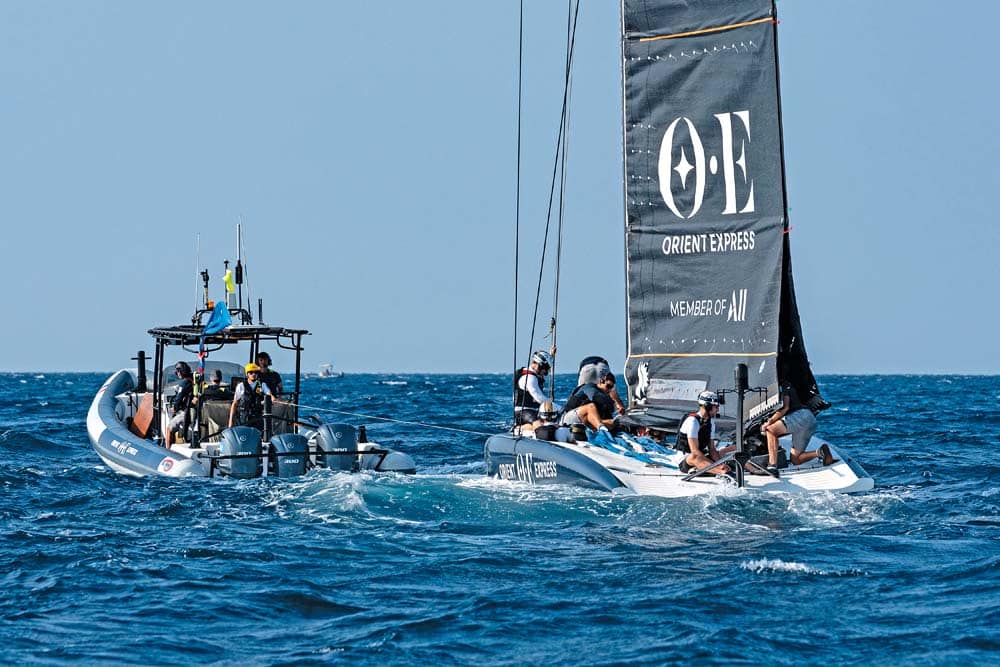


In this exclusive feature, the official French America’s Cup challenge team, Orient Express Racing Team, tell us how they are tackling the growing need for ever more capable and faster chase craft which are expected to keep pace with 50-knot-plus hydrofoiling racing yachts…
In the long and often good-natured rivalry between the powerboat and sailing worlds, one area has never really been up for debate, namely speed. In terms of velocity through the water, all things being equal, power has always won hands down – no contest. However, that apparent certainty is now open to serious doubt. Welcome to the Louis Vuitton 37th America’s Cup Barcelona, where the big question is: can the powerboats keep up with the latest generation of high-speed foiling race boats?
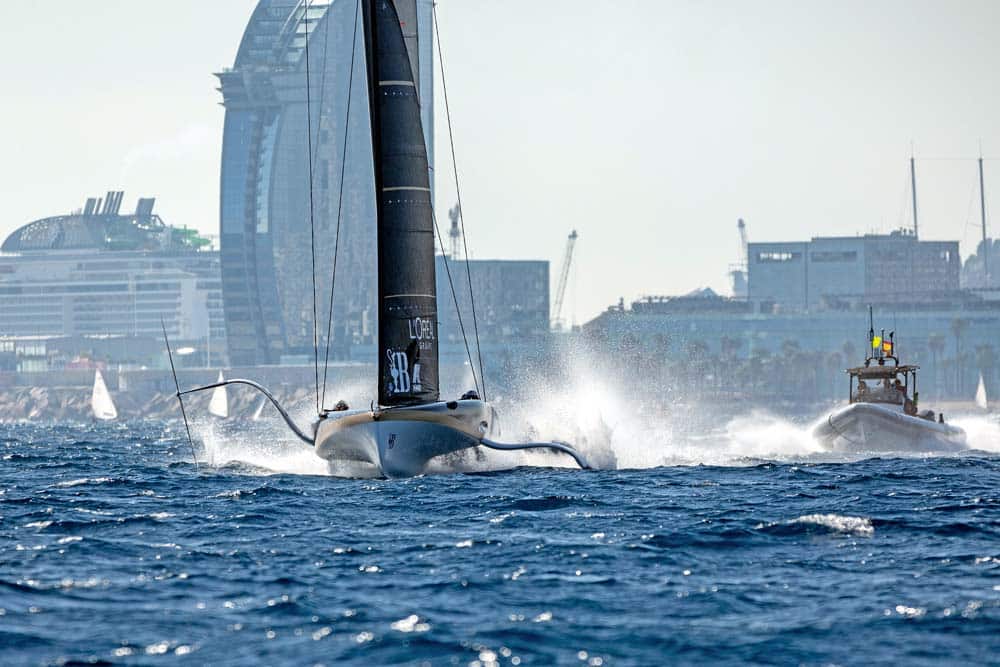

Hydrofoils are not exactly a mystery to the powerboat world, where they have been used in various capacities for many years, with their first reported use by one Enrico Forlanini coming way back in 1906 when he clocked 36.9 knots. And while sails and hydrofoils have been combined in a variety of idiosyncratic and varied designs since 1938, their far more recent adoption by high-end yacht racing has been something of a game changer.
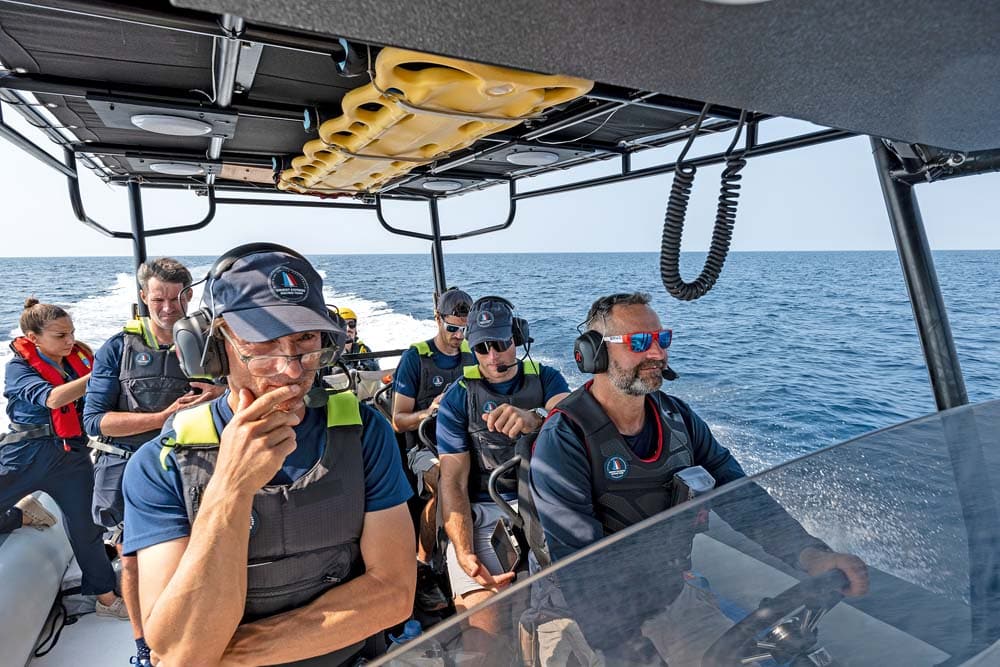

Initially making their mark in offshore and round-the-world races, ‘flying boats’ now feature inshore and in the America’s Cup, with Team New Zealand getting the ball rolling with a foiling AC72 in 2012. Coming up to date, the latest iteration of the streamlined AC75 race yachts, which will be racing off Barcelona in the near future, are hitting 50 knots-plus in even a moderate 12-knot wind speed. ‘Astounding!’ I hear you cry, which brings us back to the central question: can the teams find powered chase boats or RIBs that will be able to keep up?
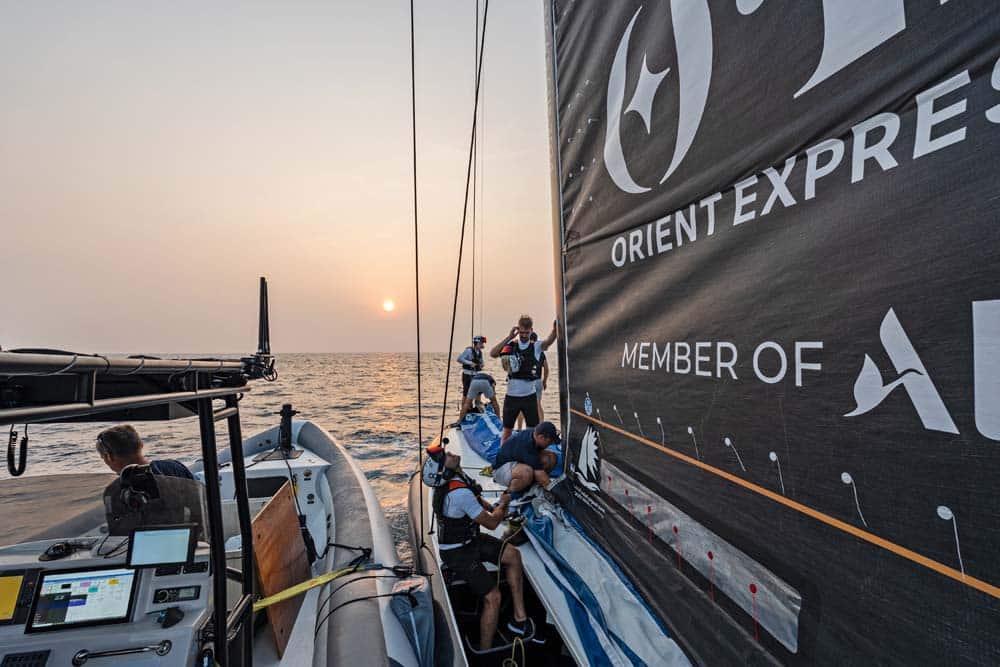

It is a requirement under America’s Cup regulations that all the teams have fast and reliable custom-built support craft that will allow coaches and technical and safety teams to react quickly to rapidly changing circumstances. All those taking part in the Louis Vuitton 37th America’s Cup have striven to find their own solutions, with the French challenger, Orient Express Racing Team, allying with the trio of Searibs, Ullman and Movilmotors for what they hope will be a winning combination.
‘We studied all the parameters and set about finding the best allies to meet our equation,’ said Louis Viat, Director of Operations for the Orient Express Racing Team. ‘Our specifications were as follows: to have fast boats capable of withstanding high speeds and catching up with our AC75. We also needed seats capable of withstanding shocks, so that the people on board could work on their tablets in suitable conditions. Searibs built our RIBs like craftsmen, Ullman fitted them with ultra-impact-resistant seats, and Movilmotors supplied us with Suzuki engines. Thanks to the rapid understanding of our needs and the responsiveness of these three companies, we now have a fleet of six RIBs that perfectly meet our performance and safety requirements.’
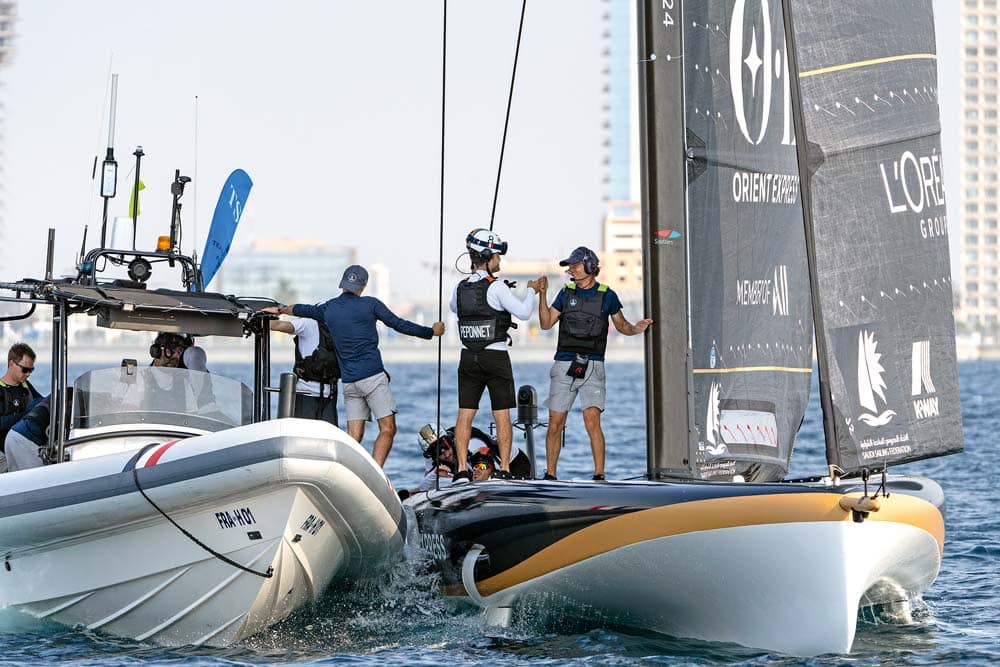

The Orient Express Racing Team RIB fleet consists of a 15m RIB with cabin for engineers, sailors, the performance department and coaches; a 13m for technicians and spare sails; a 13.5m for guests; a 9.6m to assist the AC40 Youth and Women’s America’s Cup teams; and two 9.6m RIBs for partner Alpine and their guests.
So far so good – a bespoke solution to general support boat cover. However, the America’s Cup has added spice to the mix with the requirement that every competitor must have at least one high-speed hydrogen foil boat (HSV), powered by 160kW hydrogen fuel cells, capable of maintaining a 30-knot cruising speed for a minimum of 150 nautical miles, while reaching a maximum speed of 50 knots for more than one hour of sailing during the day. These will be the only chase boats allowed into the racing zone during competition. Along with other teams, the Orient Express Racing Team has seized the opportunity of the technical challenge during racing, as well as grasping the post-America’s Cup commercial opportunities.
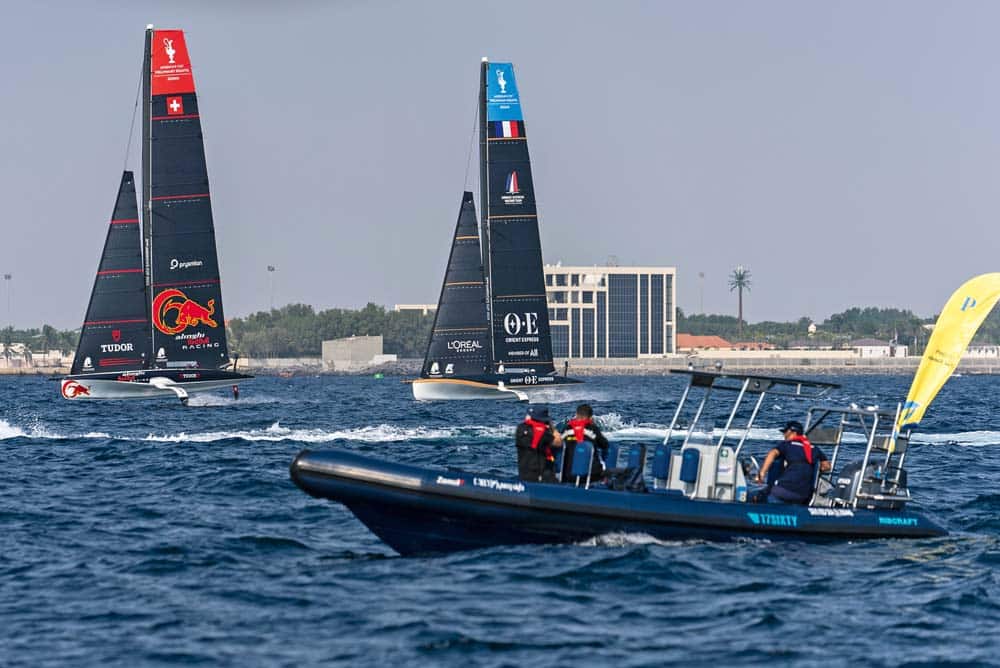

Stephan Kandler, the founder of K-Challenge, which supports the French team, and CEO of the Orient Express Racing Team, likes to say: ‘Competition makes you smarter.’ And he adds: ‘The first HSV will serve as a laboratory for developing version 2, which will be dedicated to the commercial market for coastal motor boats under 30 metres. This new model will be presented at the United Nations Ocean Conference in Nice in June 2025. Our project has the support of the French Secretary of State for the Sea, following the signature of an R&D partnership agreement that will enable the widespread use of the technological elements of the hydrogen boat as part of the France Mer 2030 initiative.’
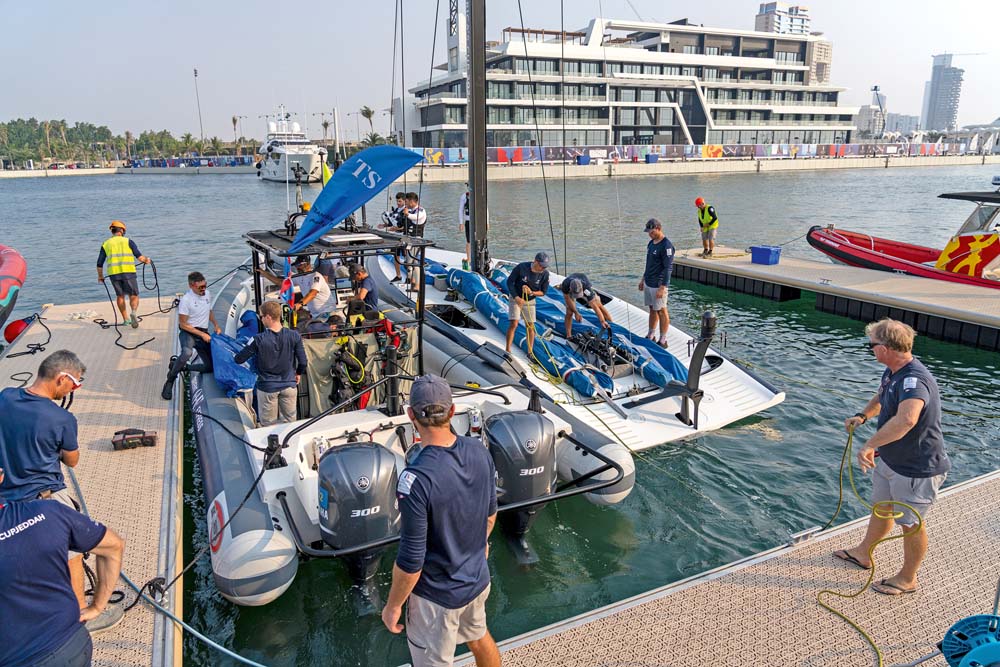

K-Challenge, via its subsidiary K-Challenge Lab, has taken up the technological challenge alongside a European consortium to develop a 33ft (10m) hydrogen catamaran flying on hydrofoils, designed by French architect Philippe Briand, powered by two REXH2 fuel cells coupled to three 63kWh batteries from hydrogen specialist EODev, and built by the Italian shipyard Bluegame.
‘We have joined forces with a consortium that has been working with experts for months to meet these very precise specifications,’ said Antoine Carraz, Technical Director of the Orient Express Racing Team, who is in charge of building the AC75 race boat and monitoring the construction of the hydrogen boat. ‘There are several major constraints to take into account. Firstly, the need to sail for long periods at high speeds; this requires performance that boats powered solely by batteries are unable to achieve, even on foiling catamarans, because of the weight and volume taken up by the batteries. Hence the need for a combination of solutions, including a hybrid system using hydrogen.’


Carraz continued: ‘We also know that the shape and total surface area of the hull in contact with the water is a key factor in terms of energy efficiency. Hence the catamaran. While the drag is less on a flying boat, we mustn’t forget the Archimedean take-off phase, which is very energy intensive.’
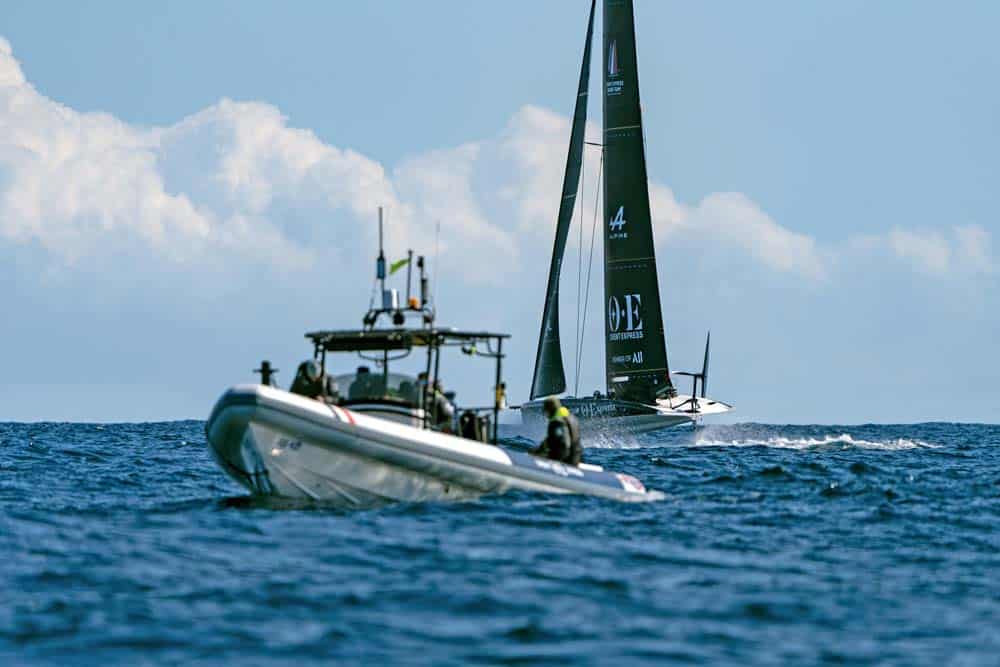
Possibly on a similar route, the New York Yacht Club’s American Magic chase boat is also being built at Bluegame to a Briand design. Meanwhile, Cup defender Emirates Team New Zealand, who installed the requirement, have developed Chase Zero, a 33ft six-passenger vessel that can hit 50 knots and cruise at 35 with a range of over 112 nautical miles. Below decks, four composite fuel tanks hold green hydrogen compressed to 350 bar. The high-reliability 80kW fuel cells drive two 400V electric motors that generate a total of nearly 600hp. The new chase boats will be aiming to keep up when racing begins in earnest, though only time will tell who gets to keep the speed title …




Jo Moon reports on New Wave Club's innovative membership model that's making boating accessible to all. From premium Sea-Doo jet…


Discover the latest motorboats, innovations, equipment, and refit expertise at boot 2026, the world’s leading boating showcase returning to Düsseldorf…


How to keep your young crew smiling with these smart boating tips!


PBR's Ed Hickling explores the Southamption International Boat Show to report on 17 show debuts. Plus, your chance to let…